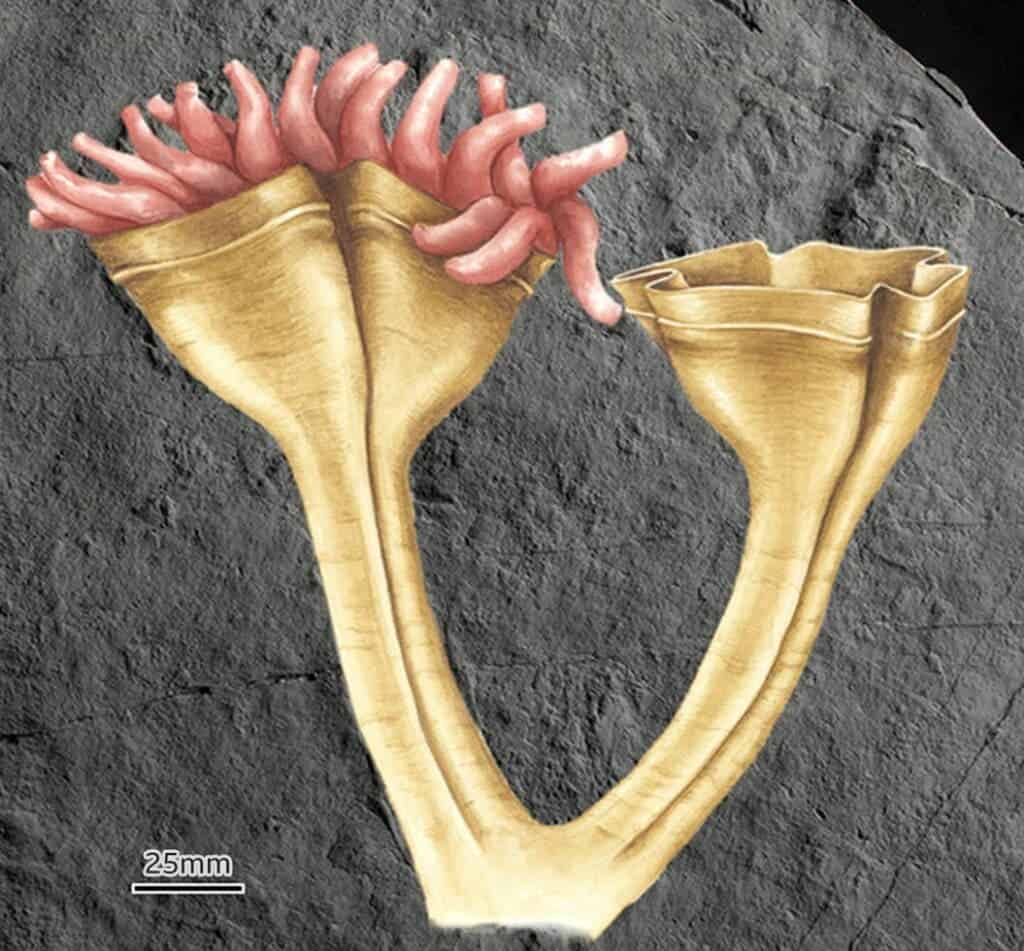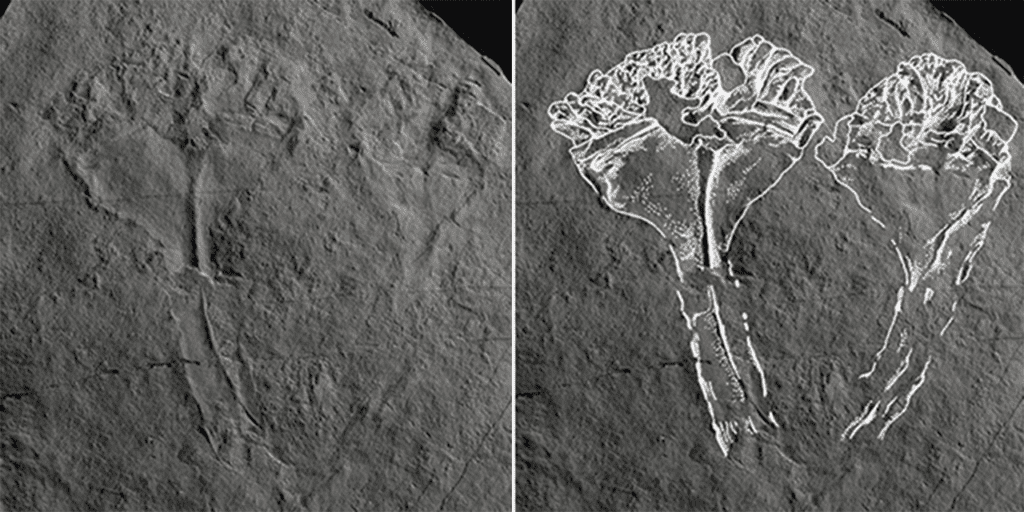Researchers in the UK report finding the oldest known predator fossil to date.

The fossil, dated to roughly 560 million years ago, was unearthed in the Charnwood Forest in Leicestershire. It was most likely one of the ancestors of today’s cnidarians, the family of species that includes modern corals, anemones, and jellyfish. But don’t let that family connection fool you: the fossil species, christened Auroralumina attenboroughii in honor of Sir David Attenborough, is the earliest known predator in the history of our planet.
First to the punch
“I think it looks like the Olympic torch, with its tentacles being the flames,” said Oxford University’s Dr Frankie Dunn, who reported the discovery in the journal Nature Ecology and Evolution.
Auroralumina, to match that thought,is Latin for “dawn lantern” – and, like the dawn, this species was early. Auroralumina attenboroughii pushes back our known timeline for predation in the animal kingdom by some 20 million years, and is likely the first example of an organism with a true skeleton, as well.
Its outline, measuring around 20 cm (8 in) in height was discovered imprinted on a long, sloping slab of quarry siltstone, alongside other fossil imprints. It is believed that these animals were all caught in a flow of sediment and ash on the underwater rim of an ancient volcano, which helped preserve them through the ages.

The specimens were originally unearthed in 2007 when researchers cleaned the Charnwood rock face with high-pressure hoses. Since then, the team has studied the panoply of fossils and how Auroralumina fit in with the whole group.
They hail from the Ediacaran (635 to 538 to million years ago), a time directly preceding the greatest explosion of biodiversity in the whole of Earth’s history. Many of the animal groups alive today can find their roots in species that evolved during the Cambrian explosion. The site in Charnwood Forest is renowned for the great number of fossils from this time that it has yielded in the past.
Until now, it was believed that cnidaria also appeared during the Cambrian, but Auroralumina proves that its lineage stretches further back into the Ediacaran. The group’s defining characteristic is its use of stinging cells, usually placed along long appendages, to stun and capture prey.
“This is the cast-iron evidence of modern-looking organisms in the Pre-Cambrian. That means the fuse for the Cambrian explosion was probably quite long,” said Dr Phil Wilby, palaeontology leader at the British Geological Survey.
The team judges that the species belonged to the medusozoa sub-group of cnidarians. These animals transition through various stages in a complicated life cycle, going from being anchored to the seafloor into a free-floating state in which they reproduce sexually. During this stage, they take on an umbrella-like shape with trailing stinging tentacles – essentially, a jellyfish.

Auroralumina‘s structure most closely resembles the immobile, rooted stage of a medusozoa, reminiscent of a sea anemone.
“What’s really interesting is that we think it’s bifurcating, so you have these two ‘goblets’ which are attached near their base, and then there would have been a continuous bit of skeleton going down to the seafloor, which we don’t see. Unfortunately, the fossil is incomplete,” Dr Dunn told BBC News.
The paper “A crown-group cnidarian from the Ediacaran of Charnwood Forest, UK” has been published in the journal Nature.


